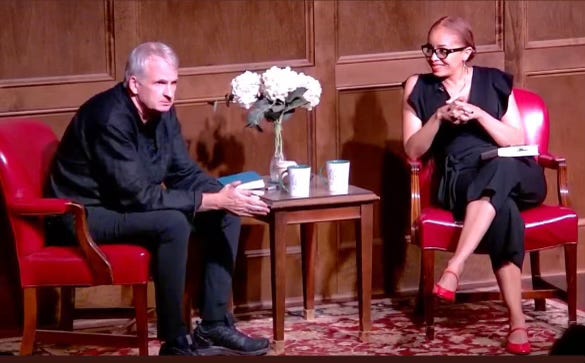
Donald J. Trump’s second term as President of the United States has stunned the world. Commentators increasingly say the US has now crossed the Rubicon into authoritarian territory.
While some say Trump’s actions are erratic, a closer look reveals a methodical attempt by his administration to dismantle a broad range of US institutions and agencies and to suffocate international institutions, universal human rights, and the rule of law. The breakneck speed, scope, and impact of the Trump administration’s actions through Executive Orders and directives has created a chaotic atmosphere of uncertainty and fear around the world.
Checks and balances among the three US branches of government are in tatters. Congress is overwhelmed by Trump loyalists. Despite the Republican Party’s thin majorities in the House of Representatives and Senate, the opposition Democratic Party is dismayingly weak. The Executive under Trump has been defying the Constitution as well as its obligation to uphold the laws made by Congress. It is unclear whether the US legal system can withstand the Trump administration’s increasingly brazen threats against judges and lawyers.
Trump secured and maintains his power through alliances with billionaire backers, religious nationalists, and the Republican Party. This three-legged stool is supported by sinuous networks of propaganda, disinformation, and smear campaigns.
The authoritarian agenda of Trump 2.0: Selected domestic issues
While the US has often been a violator of international law, the second Trump administration has plunged the US into open defiance of its international human rights obligations, including conventions on civil and political rights, elimination of racial discrimination (ICERD) and the prohibition of torture and ill-treatment. These treaties have been ratified by the vast majority of the world’s countries. Mr. Trump’s threats against other countries and territories puts the US at odds with the Charter of the United Nations (UN Charter). His administration is also contravening the US Constitution, including its provision that international treaties are part of the “supreme Law of the Land.”
The DOGE chainsaw
President Trump appointed a multi-billionaire, Elon Musk, and his Department of Government Efficiency (DOGE) to wield a proverbial chainsaw to slash indiscriminately through the US civil service and dismantle major foreign policy programs, including the US Agency for International Development (USAID). The USAID cuts have been devastating worldwide, because a whopping 43 percent of the world’s humanitarian funding came from the US. Dramatic cuts to the US domestic civil service and social programs have had disproportionately negative impacts on women, Black people, Indigenous Peoples, transgender people, people with disabilities, veterans, and older people. DOGE’s cavalier operations have cast a pall of dread and silence over the civil service and beyond.
A central preoccupation: Abolishing DEI
A major goal of the Trump administration is represented by the President’s Executive Order to eliminate government programs supporting “diversity, equity, and inclusion” (DEI). The Executive Order also requires federal agencies to ensure that its contractors terminate DEI policies and to encourage the private sector “to end illegal DEI discrimination and preferences.”
President Trump’s Executive Order portrays DEI policies as a guise for “dangerous, demeaning, and immoral race- and sex-based preferences.” Mr. Trump and his supporters counterfactually claim, without evidence, that DEI fosters illegal discrimination. Such portrayals are contrary to the purpose of DEI programs which UN guidelines say are rooted in the Universal Declaration of Human Rights and the ICERD, and are intended to address and remedy the “causes and consequences of historic, structural or systemic discrimination.” The manner by which the anti-DEI agenda is being carried out leaves no reasonable doubt that the administration objects to DEI policies because they threaten the historic privilege of White people, particularly White males.
Anti-DEI measures have included clear messages that discrimination against women and non-White people is now the expected default position. Arlington Cemetery removed African-Americans, Hispanic people, and women from its highlighted profiles of prominent veterans buried there. The Department of Defence’s “auto removal process” scrubbed webpages featuring the Tuskegee Airmen of WWII, Indigenous “Code Talker” units of World Wars I and II, a Vietnam War General Medal of Honor recipient, and the baseball legend Jackie Robinson. After public outcries, the DOD reinstated these pages.
The impact extends to corporations including Google, Amazon, Meta, and Netflix, which have compliantly retreated from DEI commitments. Foreign corporations in other countries, including Canada, may also be impacted by anti-DEI requirements for US government contractors. No fewer than 14 independent human rights experts appointed by the UN Human Rights Council have jointly expressed alarm that the US administration is trying to reverse decades of work to address structural inequalities and discrimination; they have urged businesses to hold firm to DEI principles.
Assault on the legal system, legal education, and lawyers
Anti-DEI policies have been used to target law schools, the American Bar Association (ABA) and private law firms. Georgetown University’s law school is among several law schools that received letters from the Department of Justice that no applicant will be considered for internships or employment if they are a student or are affiliated with a law school that “continues to teach and utilize DEI.”
The Dean of Georgetown Law pushed back publicly with a reminder that the US Constitution guarantees that “the government cannot direct what Georgetown and its faculty teach and how to teach it. The Supreme Court has continually affirmed that among the freedoms central to a university’s First Amendment rights are its abilities to determine, on academic grounds, who may teach, what to teach, and how to teach it.”
The ABA has run afoul of Trump’s Attorney General (AG), Pam Bondi, over DEI policies. In February, the ABA suspended its DEI policies pending revisions to comply with the US Supreme Court’s 2023 decision that struck down affirmative action in college admissions as unconstitutional. Suspending the policies was not enough for the AG. On 5 March, Ms. Bondi threatened the ABA with removal of its status as an accrediting body for law schools if it did not strike down the whole DEI policy “immediately and entirely.”
Department of Justice officials involved in past criminal cases against Mr. Trump have faced dismissal. Several prosecutors resigned after being ordered by the Trump-appointed acting Attorney General to drop charges in a prominent corruption case; the prosecutors believed the instructions compromised their professional ethics.
President Trump has subjected prosecutors, law firms, and individual lawyers to public vilification, threats and administrative harassment in retaliation for their work on past cases against him. For example, the President issued a 6 March Executive Order against the law firm of Perkins Coie suspending its security clearances, terminating its government contracts, and threatening it for its DEI practices. Perkins Coie took the matter to court, saying it “is an unlawful attack on the freedom of all Americans to select counsel of their choice without fear of retribution or punishment from the government.” On 10 March they received a temporary restraining order.
On 14 March, the President issued a similar retaliatory Executive Order against the law firm of Paul Weiss. On 21 March, Mr. Trump rescinded the order after Paul Weiss agreed to backtrack from DEI and provide US$40 million in pro bono legal services on White House initiatives. The capitulation of Paul Weiss has led over 1,300 associate lawyers from hundreds of US law firms to join a letter demanding that large law firms speak out to defend US lawyers from intimidation and to uphold the rule of law.
In mid-March, 20 US law firms, including Perkins Coie, received letters from Trump’s newly-appointed Acting Chair of the EEOC, expressing concern that their employment practices, including DEI, might be discriminatory and seeking detailed personal information about people hired since 2015. The Lawyers’ Committee for Civil Rights Under Law condemned the EEOC’s letters as part of a politically-motivated “anti-DEI crusade.”
On 21 March, President Trump issued a chilling memorandum directing the AG to “seek sanctions against attorneys and law firms who engage in frivolous, unreasonable, and vexatious litigation against the United States or in matters before executive departments and agencies of the United States.” He directed her “to review conduct by attorneys or their law firms in litigation against the Federal Government over the last 8 years.” He singled out one lawyer, Marc Elias, who was successful in defeating dozens of lawsuits filed by Mr. Trump’s 2020 campaign team to challenge the results of the 2020 election. While the current AG promised to act independently during her Senate confirmation hearings, she has so far conformed to the President’s wishes.
Law suits and retaliation against judges
At least 135 law suits have been commenced against the government by civil servants, military service people, civil society groups, churches, Indigenous Peoples and others. The lawsuits challenge the administration’s actions on various issues, including USAID, DEI, military service by transgender people, immigration, and deportations. Preliminary injunctions have been issued in favour of a number of complainants pending full hearings.
The administration has failed or refused to comply with some orders. Several judges who have made rulings unfavourable to Mr. Trump or his administration have been subjected to public derision, threats of violence, and impeachment proceedings and other plans in Congress to limit “rogue rulings.” The Federal Judges Association has registered concern about increased criticism, threats and violence aimed at judges, noting that “irresponsible rhetoric shrouded in disinformation” undermines public confidence in the justice system.
Arbitrary detention, mass deportations, and resistance to court rulings
Mr. Trump’s election promises included mass deportations of “criminal aliens.” Over the past two months many undocumented and documented immigrants, visa-holding visitors, and even permanent residents – with no criminal records – have been detained or deported, often without due process. Many have been denied timely access to lawyers. Some have been ill-treated and/or subjected to enforced disappearance.
One case involves Columbia University graduate student, Mahmoud Khalil, a US permanent resident married to a pregnant US citizen. On 8 March, unidentified Immigration and Customs Enforcement (ICE) agents arrested Mr. Khalil at his New York City home. He was first taken to New Jersey, but he disappeared overnight, emerging the next day at a Louisiana immigration detention centre.
He was targeted for organizing Palestinian rights protests at Columbia University. While Mr. Khalil did not himself participate in protests, he served as an intermediary between protestors and the University administration.
Mr. Khalil has no criminal record and has not been charged with any offence. Officials claim his actions led to protests that created an atmosphere of antisemitism where Jewish students suffered harassment. In April 2024, Mr. Khalil had told CNN, “[t]here is, of course, no place for antisemitism.” He is also accused of facilitating activities “aligned to Hamas,” a US-designated terrorist group. No evidence has been made public that he has links to Hamas or that he has provided support for any terrorist organization. Rather, the grounds for deportation are that his “presence or activities in the United States would have serious adverse foreign policy consequences” for the US.
On 10 March, a federal judge blocked his deportation pending an immigration court hearing in Louisiana on 8 April. Mr. Khalil’s lawyer also filed a habeas corpus application, which a US District Court has ordered moved to New Jersey. At the time of writing, Mr. Khalil remains detained in Louisiana.
Another international PhD student at Columbia University fled to Canada after learning that ICE agents were looking for her. She was a passerby during a Palestinian rights protest at Columbia. She fled for fear of indefinite detention or enforced disappearance. A chilling climate of self-censorship has fallen over universities across the US, particularly among international students, who fear for their safety.
On 15 March, hundreds of Venezuelans were deported in planes to an El Salvador prison without due process. The government said the mass deportations were justified under the 18th century Alien Enemies Act used in the past only to deport nationals of enemy States during wartime. It was last used during World War II to intern noncitizens of Japanese, German and Italian descent.
The government says the Venezuelan deportees are terrorist gang members engaged in “irregular warfare” against the US. So far the government has refused to provide the court with the deportees’ identities or the evidence against them, saying the government will not “reveal details about a counter-terrorism operation.” Several people who are believed to be possibly among the deportees have disappeared.
The Venezuelans’ deportations contravened a temporary restraining order by US District Judge James Boasberg prohibiting their removal from the US and ordering any flights in the air to be turned around. The administration ignored the order, claiming that the judge’s oral order was invalid and did not apply to flights that were already over international waters.
El Salvador’s president, who agreed to house the prisoners, posted to his social media an article about the judge’s order with the comment, “Oopsie … too late.” The Secretary of State, Marco Rubio, joined this mockery by reposting the comment.
The judge ordered the government to appear on 17, 18 and 21 March to account for its actions. The government continues to refuse to provide the requested information, citing national security.
Mr. Trump’s appointed “border czar” said on 17 March, “I don’t care what the judges think.” On 18 March, President Trump wrote, “this judge, like many of the Crooked Judges’ I am forced to appear before, should be IMPEACHED!!!” The President did not mention the judge’s name, but Republican House representatives knew what was expected and initiated articles of impeachment against Judge Boasberg.
The same day, Supreme Court Chief Justice John G. Roberts issued a statement: “For more than two centuries, it has been established that impeachment is not an appropriate response to disagreement concerning a judicial decision. The normal appellate review process exists for that purpose.”
President Trump dodged the Chief Judge’s rebuke, saying, “he didn’t mention my name.” The President continued talking about impeachment.
International issues: Shift from international legal order to imperial power
The Trump administration has withdrawn from several international organizations and agencies, including the Paris Accord on climate change, the World Health Organization, UNESCO, and the UN Human Rights Council. President Trump has upended longstanding international alliances and economic relationships, engaging in economic coercion through tariffs against Canada, Mexico, and other countries. Legal commentators say the North American tariffs violate international trade law and the US-Mexico-Canada trade agreement (USMCA).
Mr. Trump’s tariffs against Canada have appeared to be aimed at destroying the Canadian economy with the goal of annexing Canada. President Trump has threatened the sovereignty of several countries or territories, including not only Canada but also Panama, Greenland and Gaza. Such threats violate fundamental principles of international law, including the UN Charter. The President has couched these threats not in legal terms but in terms of naked power. Trump has also sided with Russia in its aggression against Ukraine.
Indigenous leaders in Canada point out that talk of annexation threatens Indigenous Peoples’ sovereignty and right to self-determination guaranteed by international law, including the UN Declaration on the Rights of Indigenous Peoples (UNDRIP), endorsed by the US in 2011.
Crossing the line into authoritarianism
In summary, President Trump has subordinated international and domestic law to his own interests or those of his business cronies and religious nationalist base, who have buttressed his power through donations to his campaign or skewed news or social media in his favour.
Canadian human rights advocate Alex Neve pronounced the rule of law in the US dead after the Trump administration openly defied the court in the Venezuelan deportees’ case. There is good reason to conclude that the Trump administration has transformed the US into an authoritarian State.
Authoritarian governments generally try to bolster their legitimacy by using laws, decrees, and court hearings to justify their actions, often creating, twisting, interpreting, or manipulating laws to suit their purposes and to punish resistance. This is called “rule by law” or “rule by decree,” which contrasts starkly with the rule of law. In this regard, the Trump administration is operating like other authoritarian governments.
The rule of law has been replaced by “rule by decree,” including Presidential Executive Orders and directives, often capriciously announced and justified with disinformation through social media, and amplified by Mr. Trump’s supporters. Respect for the rule of law has been replaced by contemptuous propaganda that judges who uphold the law are “corrupt” and lawyers who oppose his policies are “scum.”
What does this mean for Canadian lawyers?
It is now implausible – and a mistake – to treat the Trump administration like a normal government. Americans are now living under authoritarian rule. Canadians are living in its oversized, ominous shadow.
Canadian lawyers and legal organizations need to take firm stands to uphold the rule of law. This includes clear denunciation of threats against the sovereignty of any country, territory, or people. It also includes strong advocacy to uphold international law and standards for independence of judges, prosecutors and lawyers.
Canadian lawyers have a duty to resist pressures on their cross-border clients to erode anti-discrimination policies of Canadian businesses or organizations; such capitulation may violate the Charter of Rights or the Canadian Human Rights Act. Canadian lawyers should also publicly reject all propositions to adopt copy-cat anti-DEI policies in Canada, which violate international law and standards by fostering racial and gender-based discrimination.
Human rights lawyers have long worked in solidarity with colleagues at risk around the world. Now is the time to publicly stand with judges and lawyers in the US, as have a number of lawyers’ organizations around the world.
Authoritarian environments (or life in their chilling shadows) make it tempting to retreat from robust articulation of human rights principles so as to avoid tensions or repercussions. Yet, as Elie Weisel famously said, sometimes “we must take sides. Neutrality helps the oppressor, never the victim.” Polite self-censorship will only foster the continued erosion of the rule of law.
The post The US as an Authoritarian State: Danger to the Global Rule of Law appeared first on Slaw.











 The Philadelphia Inquirer and The Chicago Sun-Times published a summer reading list in a special insert section that listed authors, most of whom are real, and books, most of which are fake. Signs (it’s a big neon sign about 100 meters tall) point the text being generated by AI.
The Philadelphia Inquirer and The Chicago Sun-Times published a summer reading list in a special insert section that listed authors, most of whom are real, and books, most of which are fake. Signs (it’s a big neon sign about 100 meters tall) point the text being generated by AI.



